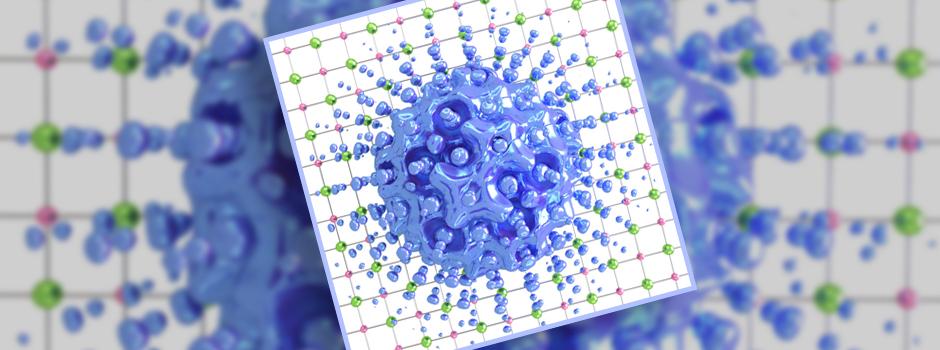Researchers at NYU Shanghai theoretically proposed a possible approach to inducing superconductivity in ferroelectrics, a common class of materials. The findings were recently published in the international scientific journal Nature Communications. NYU Shanghai Assistant Professor of Physics Chen Hanghui conceived the project and supervised the research. His group members, undergraduate students Ma Jiaji ’21 and Yang Ruihan ’18, were the two main participants.
In the research, the team used sophisticated calculations to predict that by injecting electrons into ferroelectrics, as the material sways between two distinct structures, superconductivity is likely to emerge.
Electron-phonon coupling is the most fundamental interaction in solids, other than Coulomb interaction. It can significantly change the transport and thermodynamic properties in metals. In particular, it can produce effective attractions between electrons, giving rise to superconductivity at low temperatures. In recent years, many hydrides have been synthesized in laboratories and have been observed to be superconducting with transition temperatures of over 200 K under ultra-high pressure, indicating that electron-phonon coupling can also lead to high temperature superconductivity.
However, ultra-high pressure has stringent requirements on sample sizes and great limitation on detection methods, therefore it is difficult to have practical applications. Professor Chen's team attempted to explore whether it is possible under ambient pressure to increase the transition temperature of phonon-mediated superconductivity in metals by enhancing the electron-phonon coupling, so as to produce conventional superconductivity.
The research team focused on doped ferroelectrics in the study. By performing first-principles calculations, they found that doped ferroelectrics can produce a polar-to-centrosymmetric transition that "softens" the polar phonon modes and hence increases its electron-phonon coupling. In the vicinity of the critical electron concentration, with the softening of polar phonons, the electron-phonon coupling strength increases, thus creating a favorable condition to induce conventional superconductivity.
The research is the latest success from NYU Shanghai’s efforts to identify and nurture emerging talents in the sciences. With two undergraduates as the first and second authors, the publication is a work purely “made by NYU Shanghai,” Chen said.
“NYU Shanghai has a well-rounded training environment for students talented in scientific research. We have the Dean’s Undergraduate Research Fund (DURF) to encourage research among undergraduate students and the Student Research Program in Physics (SRPP) at NYU Shanghai for upper-class undergraduate and post-graduate students, where students enjoy the thoughtful and thorough guidance of professors and are provided with immersive research experience. It was through these two programs that I recruited Ma Jiaji and Yang Ruihan to my team when they were a freshman and a junior respectively. Our more than two-years of constant exploration have yielded some interesting physical findings,” said Chen, who is a member of NYU-ECNU Institute of Physics at NYU Shanghai.
After graduation, Ma, the first author of the paper, plans to continue his research at the Department of Applied Physics at Yale University. Yang, the second author, is pursuing a PhD degree in Computer Science at the University of California - Irvine.
The research was funded by the National Natural Science Foundation of China and the NYU University Research Challenge Fund.
----------
More research from NYU Shanghai scientists:
Teleporting Quantum States using Majorana Fermions
Research: Peers and Parents Shape How You Cope With Negative Emotions
How Do Stone Forests Get Their Spikes? New Research Offers Pointed Answer


